Our History
History of Our School
For more than 100 years Smith College School for Social Work has been providing exceptional training in clinical social work on the Smith College Campus in Northampton, MA.
Have something to add? Submit an item for the timeline using this form.
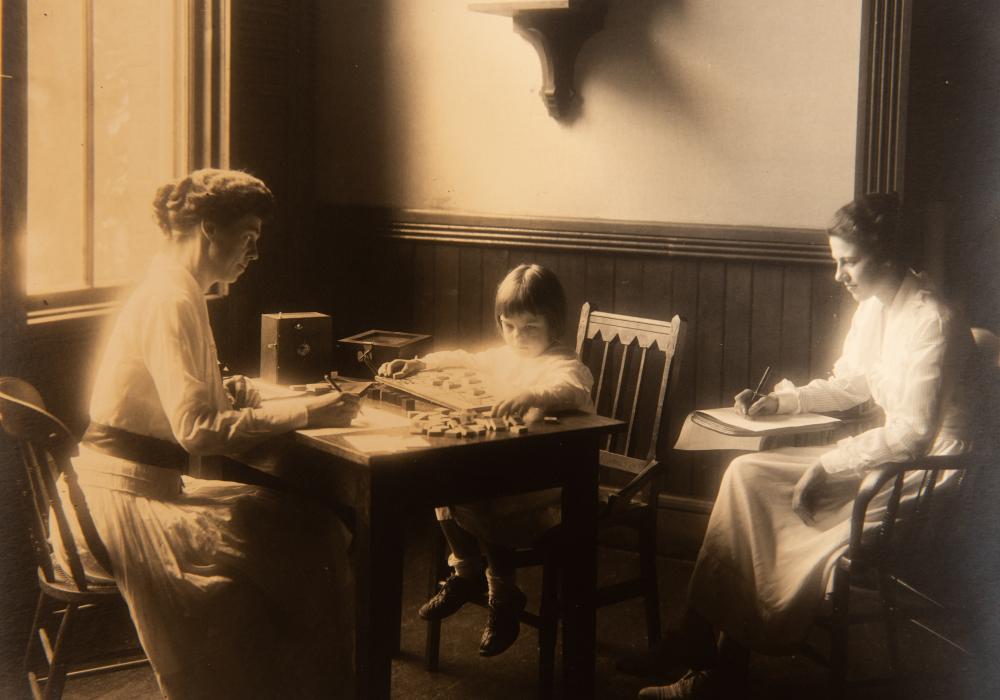
Heading
Journal Undergoes Overhaul
In 2024, under the leadership of Kenta Asakura, M.S.W. '04, Ph.D., LICSW, the journal was renamed to Studies in Clinical Social Work: Transforming Practice, Education and Research to identify ways to more accurately represent the journal's identity and vision as a leading journal of clinical social work. Despite the name change, the journal's core identity did not change. It remains focused on and committed to clinical social work and will continue its affiliation with Smith College School for Social Work. As the new title signifies, the journal focuses not only on clinical practice but also on clinical education and research from the social work community.

Heading
C-PASS Established
In fall 2024 the School establishes the Committee for Program Affordability and Student Support to explore ways to make the program more affordable. C-PASS builds on the foundational efforts of the national student-led P4P movement, whose survey and advocacy brought national attention to the economic challenges facing social work students. C-PASS includes the dean and associate dean, directors of practicum learning, admission and financial aid, community engagement and student support, as well as members of the SSW P4P chapter.
Heading
Reflecting on 2022 and Welcoming 2023
This year has brought new challenges to our work as social workers. Here at SSW we were so grateful to welcome students back to campus but, like so many of you, also struggled with the news from around the country and the world. We are all faced with balancing our hope and joy with the challenges of the world around us. As we look towards the end of 2022, I hope you are able to find moments for rest, joy, and contemplation.
With love,
Marianne R.M. Yoshioka, MBA, Ph.D., LCSW
Dean | Elizabeth Marting Treuhaft Professor
Smith College School for Social Work
Heading
InDepth Wins Award
The spring 2022 edition of InDepth won a Gold Circle of Excellence Award from CASE in the category of Alumni/General Interest Magazines.
From the Judges: The judges were impressed by the publication, which boasted a well-designed layout that exuded a high-quality touch. The attention to detail and visual appeal of the publication contributed to its engaging nature, capturing the readers' interest and holding their attention. The judges recognized the commitment to excellence and their ability to create a captivating reading experience.

Heading
Welcome 2022
As social workers, our attention is often pulled in so many directions. AS we reflect on the year that has passed and contemplate what is to come in 2022, we hope that you are able to find moments for joy, reflection, and peace in the new year.
Best wishes,
Marianne R.M. Yoshioka, M.S.W., MBA, Ph.D., LCSW
Dean | Elizabeth Marting Treuhaft Professor
Heading
SSW Launches Core Principles to Guide Work
In August 2020 Dean Marianne Yoshioka announced the School's five Core Principles to guide its programs and operations. Developed by a multi-constituent group of SSW resident and adjunct faculty and students, the Core Principles replaced the School's statement of commitment to anti-racism that was first authored in 1995.

Heading
Smith SSW Celebrates 100 Years
In 2018 Smith College School for Social Work celebrated 100 years of clinical excellence. As part of the celebration the film Clinical Revolution was filmed to tell the story of the School's creation.
Heading
Commitment to Trans Inclusion
As part of Smith College School for Social Work's ongoing commitment to trans inclusion, a team of students and faculty were brought together in spring 2017 to gather, develop and disseminate resources about trans and gender-nonconforming (TGNC) inclusion within SSW. The project was motivated in large part by student advocacy that culminated in an open letter in the summer of 2016, and aims to increase the level of shared understanding around TGNC issues and to support a culture of investment in intersectional trans competence, in alignment with the School’s continued commitment to becoming anti-racist. The team consisted of (L to R) Rickey Thorn (student), Davey Shlasko (adjunct faculty), Rory Crath (resident faculty) Jixia Ao (student) and Noah Cochran (student).
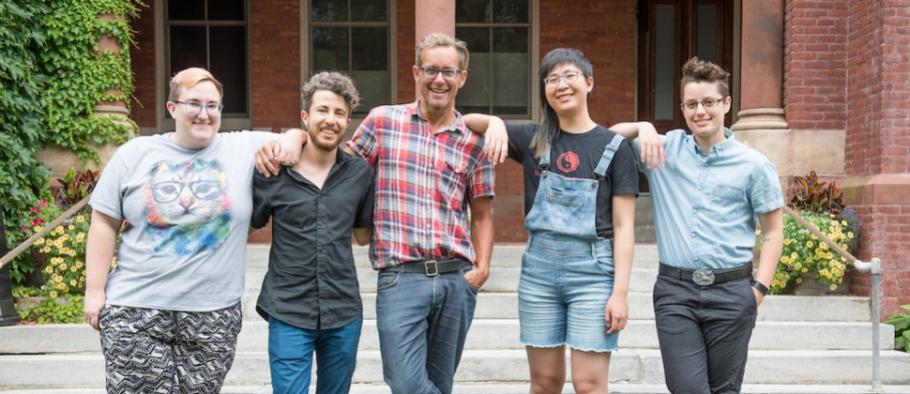
Heading
Marianne R.M. Yoshioka becomes Dean
Marianne R. M. Yoshioka became dean in 2014 and is set to retire in 2026.
Marianne R.M. Yoshioka earned her B.A. with honors from Canada’s University of Western Ontario, her M.S.W. from the University of Michigan, and her Ph.D., Florida State University’s School of Social Work; She was a professor from 1996-2014 and then associate dean of academic affairs at New York City’s Columbia School of Social Work before becoming dean at Smith College School for Social Work in 2014. She is an active member of the National Association of Deans and Directors of Social Work and the NASW. Yoshioka's research focuses on the areas of addiction, family therapy, HIV/AIDS, family violence in Asian communities, and the design and development of culturally tailored intervention. She has received related research funding from the National Institute of Mental Health, as well as private foundations, and has published her findings extensively in an effort to advance knowledge of and services for underrepresented communities.

Heading
Carolyn Jacobs becomes Dean
Carolyn Jacobs served as associate dean from 1998-2000 before becoming dean, a position she held through 2014.
Carolyn Jacobs earned her B.A. from Sacramento State University, her M.S.W. from San Diego State University, and her Ph.D. from Brandeis University. She served as a group work supervisor for United Christian Centers from 1968-1969, project director of the Consumer Health Training Project and Family Planning Project for the San Diego Urban League from 1970-1973, and project director/research assistant for the Levinson Policy Institute at Brandeis University from 1975-1976. Jacobs was the assistant director of evaluation and research/research associate for the Louisiana Department of Health and Human Resources at Louisiana State University from 1977-1978, and assistant professor: Boston University School of Social Work from 1978-1980 before joining Smith College School for Social Work in 1980. Jacobs was ethnic specialist for the Ethnic Minority Manpower Development Grant frpom 1980-1984, an American Council on Education Fellow in Academic Administration from 1984-1985 and then became an an associate professor at Smith College School for Social Work in 1985. Jacobs held the associate dean for faculty appointments position at Smith College from 1985-1987, chaired the Research Sequence at the School for Social Work from 1987-1988 and from 1994-1997. She was also the acting chair of the Afro-American Studies Department at Smith College in the Spring 1988, director of the Clinical Research Institute at the School for Social Work from 1990-1994 before she went on to become associate dean and then dean.

Heading
Anita Lightburn becomes Dean
Anita L. Lightburn served as dean from 1994-2000.
Anita L. Lightburn earned her B.A. from Wheaton College, her M.S. from Columbia University School of Social Work, her M.Ed. from Teachers College at Columbia University and her Ed.D. from Teachers College, Columbia University (Department of Family and Community Education). She held clinical positions as a caseworker, Massachusetts Division of Child Guardianship, Boston, Massachusetts, 1968-1970; supervisor, psychiatric social worker, McMahon Memorial Shelter, East Harlem, New York, New York, 1972-1973; in private practice, Adelaide, South Australia, 1980-1984; and in clinical supervision, consultation, and private practice in New York and Connecticut, 1987-1994. Lightburn's research positions include member, Research Group, Foster Home Care in Massachusetts, 1971; principal investigator, Foster Care in South Australia, South Australia, 1974; principal investigator, Child Guardianship, South Australia, 1975-1980; special research advisor, Department of Community Welfare, South Australia, 1978-1984; principal investigator, Special Needs Adoption, Project Impact, Boston, Massachusetts, 1988-1989; principal investigator, Head Start Family Support Evaluator, Hall Neighborhood House, Bridgeport, Connecticut, 1990-1994; principal investigator, Homeless and Runaway, United Council of Churches and Hall Neighborhood House, Bridgeport, Connecticut. Among her faculty positions, Lightburn was a visiting lecturer at Flinders University Medical School, Adelaide, South Australia from 1976-1978; assistant professor, Flinders University School of Social Administration, Adelaide, South Australia from 1973-1984; visiting professor, University of Connecticut School of Social Work, Storrs, Connecticut from 1985-1986; adjunct professor, University of Connecticut School of Social Work, Storrs, Connecticut in 1987, visiting assistant professor at Columbia University School of Social Work, New York, New York from 1986-1988; assistant professor, Columbia University School of Social Work, New York, New York from 1988-1992 and associate professor, Columbia University School of Social Work, New York, New York from 1993-1994.
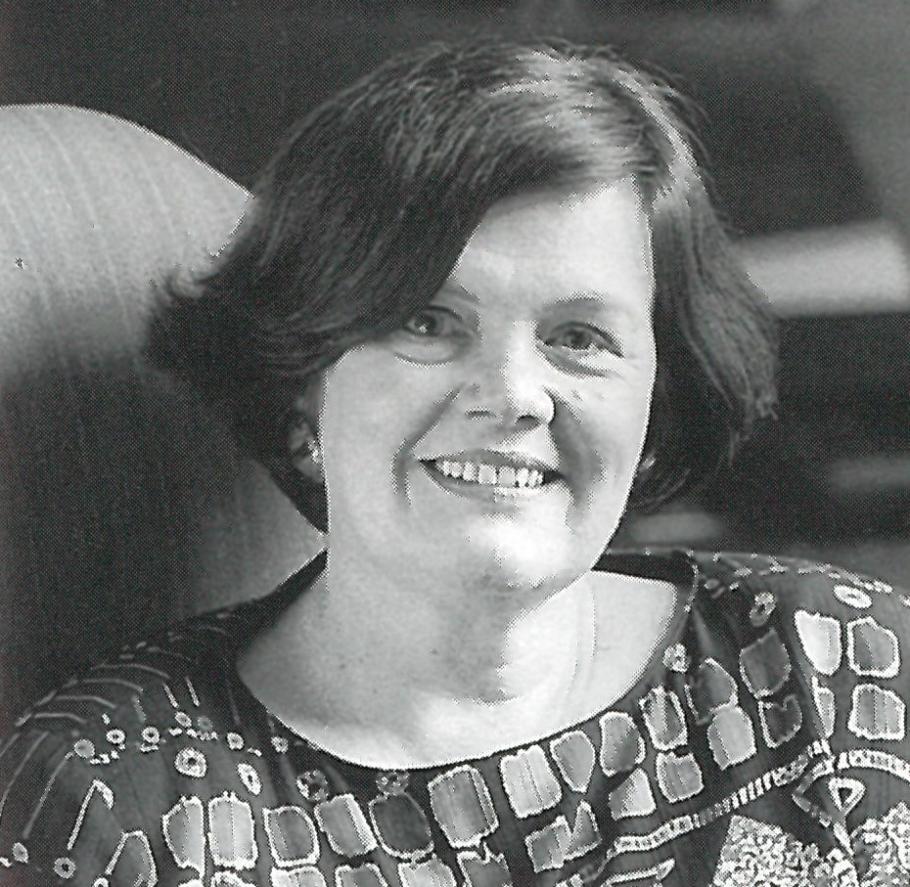
Heading
Susan Donner becomes Associate Dean
Susan Donner served as associate dean from 1990-1998.
Susan Donner earned her B.A. from the University of Massachusetts, Amherst, her M.S.W. from Simmons College School of Social Work, and her Ph.D. Smith College School for Social Work. She was a psychiatric social worker at University Hospital, Boston University Medical Center from 1970-1978 and served as operational manager of the Social Service Department, University Hospital from 1976-1978. Donner was an instructor in the Department of Psychiatry at Boston University from 1972-1978 and a field Instructor from 1972-1973. Donner also served as field instructor for Simmons College School of Social Work from 1974-1978. She became part-time faculty at Smith College School for Social Work in 1980, then assistant and associate professor, co-coordinator, Plan B Program, 1981-1984; co-coordinator, field work, 1985-1986; director, field work, 1986-1994; and finally served as associate dean while maintaining a private practice in Western Massachusetts.

Heading
Ann Hartman becomes Dean
Ann Hartman served as dean from 1986-94.
Ann Hartman earned her B.A. from Wellesley College, her M.S.W. from Smith College School for Social Work and her D.S.W. from Columbia University School of Social Work. Hartman spent many years as a caseworker, first for Summit County Child Welfare Board in Akron, Ohio, then the Community Service Society in New York, New York, and the Mid-Nassau Community Mental Health Center in Hicksville, New York. She served as executive director of the Southeast Nassau Guidance Center, a career teacher at Columbia University School of Social Work, and a social worker and consultant for the Family Service Association of Nassau County. She became an associate professor at Fordham University School of Social Service in 1969 then went on to become a professor at the University of Michigan School of Social Work from 1974-1986 as well as the chair of Interpersonal Practice from 1974-1979. Hartman was co-founder and staff member of the Ann Arbor Center for the Family. She was project director for Project CRATT and the faculty director for the National Child Welfare Training Center. She wrote Family-Centered Social Work Process in 1983 and participated in "Career Interview: Ann Hartman, a biography of ideas: Archiving intellectual history” co-constructed with Catherine K Riessman and Karen M Staller in 2016.
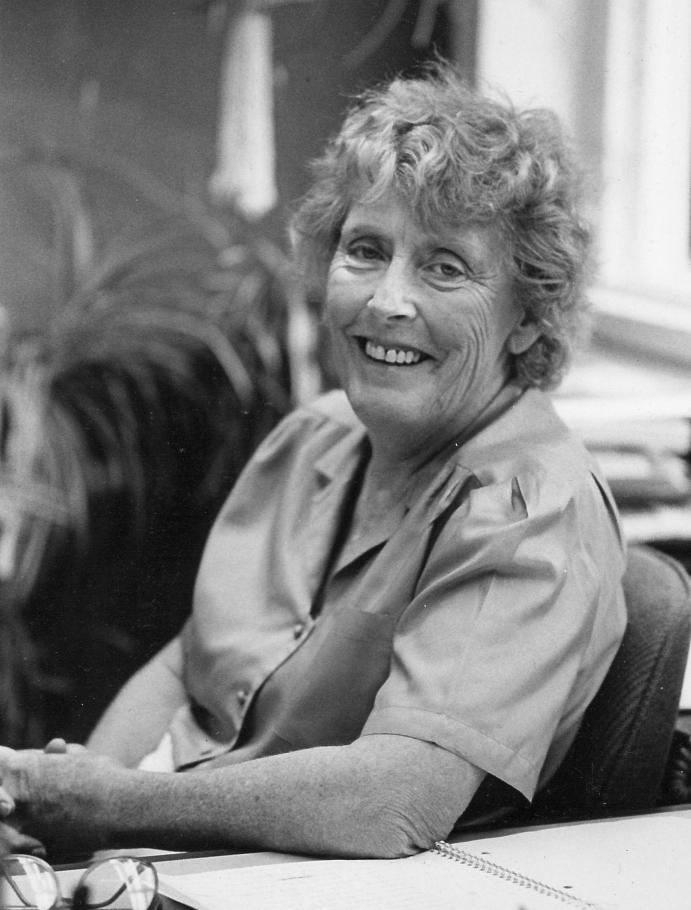
Heading
Dorcas Davis Bowles becomes Dean
Dorcas Davis Bowles served as associate dean from 1980-1990 and acting dean from 1985-86.
Dorcas Davis Bowles earned her B.S. (magna cum laude) from the Tuskegee Institute and her M.S.S. from Smith College School for Social Work. She became a social worker for the Institute for Juvenile Research in Chicago in 1960, remaining there until she took a position at the Tuskegee Institute in 1962 as the dean of women. Davis Bowles then went on to serve as a caseworker for the Chicago Child Care Society from 1964-66, program director of the Dr. Martin Luther King, Jr. Family Center in Chicago from 1967-71, and director of the Child Development Center at the Infant Welfare Society in Chicago from 1971-72. Davis Bowls was also a consultant for the Chicago Parent Child Center and Project LEARN as well as a project advisor for St. Louis Parent Child Center. Davis Bowles joined Smith College as the director of Special Programs in 1972 and she was a Child and Family Development Research Review Committee member for the U. S. Department of Health, Education and Welfare. She joined the School for Social Work in 1975 as an assistant and then associate professor, served as director of admission from 1978-80, and coordinator of field work in 1979 before becoming associate dean.
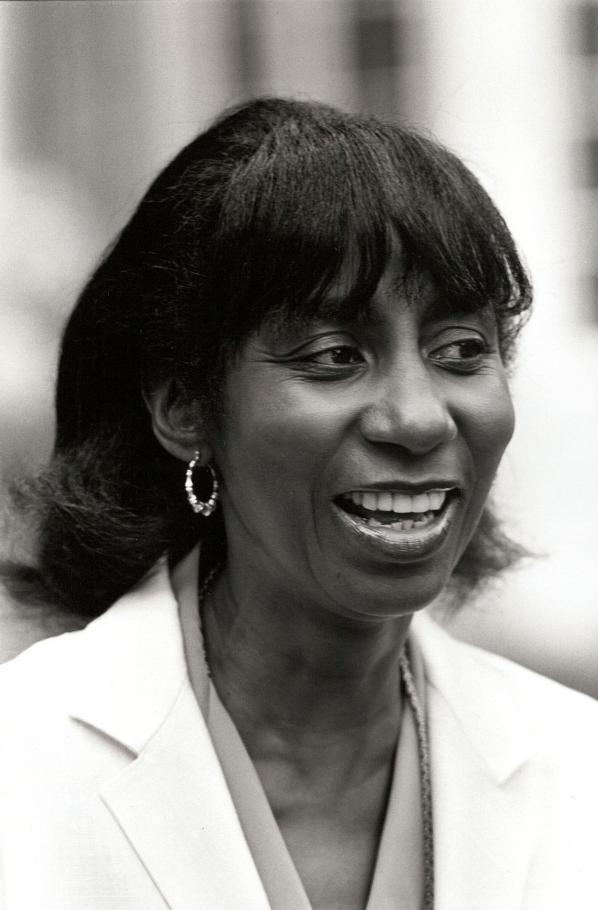
Heading
Katherine Gabel becomes Dean
Katherine Gabel served as dean from 1976-85.
Katherine Gabel earned her A.B. from Smith College, her M.S.W. from Simmons College School of Social Work, her Ph.D. from Syracuse University, and her J.D. from Albany Law School at Union University. She served as a psychiatric social worker for the Central Island Mental Health Center in Uniondale, New York from 1961-1962 and as a psychiatric social worker/superintendent for Georgia State Training School for Girls in Atlanta from 1962-1964. Gabel was also a consultant for the New York State Crime Control Council in Albany from 1968-1970. Beginning in 1970, Gabel was superintendent of the Adobe Mountain School for the Arizona Department of Corrections. She was a part-time faculty and lecturer in the Center of Criminal Justice at Arizona State University from 1974-1976 before becoming dean and professor at Smith College School for Social Work. She was also a lecturer in the dept. of sociology and anthropology at Smith College from 1976-85.
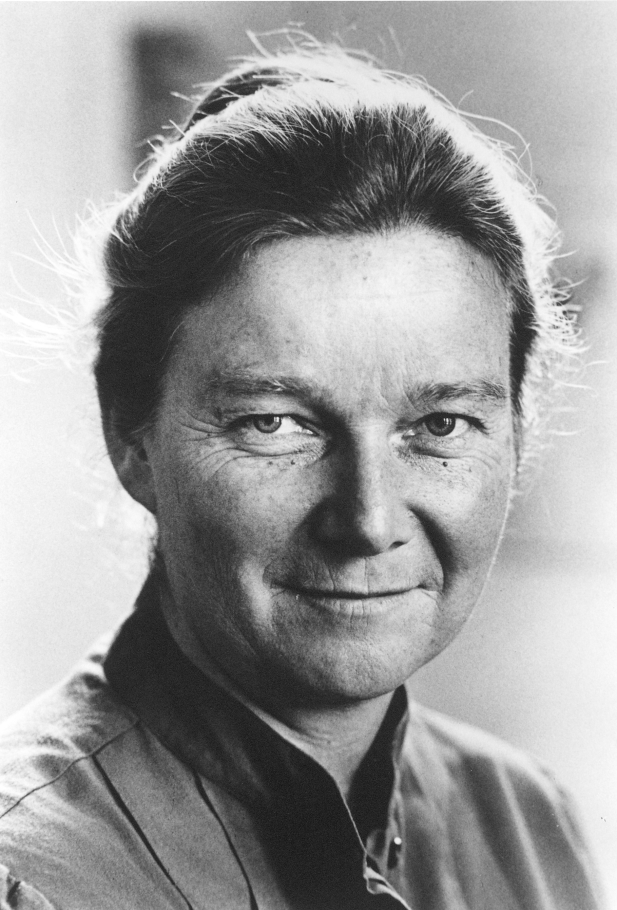
Heading
Kenneth H. McCartney becomes Dean
Kenneth H. McCartney served as acting dean from 1971-72 and dean from 1972-76.
Kenneth H. McCartney earned his B.A. from the University of Manitoba and his A.M. and Ph.D. from the University of Minnesota. He was an instructor in economics at United College from 1945-47, at the University of Minnesota from 1947-54, and a special lecturer in economics at McMaster University from 1951-52. McCartney was an asssistant professor of economics at Smith College from 1954-60 before being promoted to associate professor in 1960 and professor in 1964. He also served as dean of the faculty from 1978-1983. Prior to becoming dean, McCartney was a lecturer in the School for Social Work from 1963–1971.
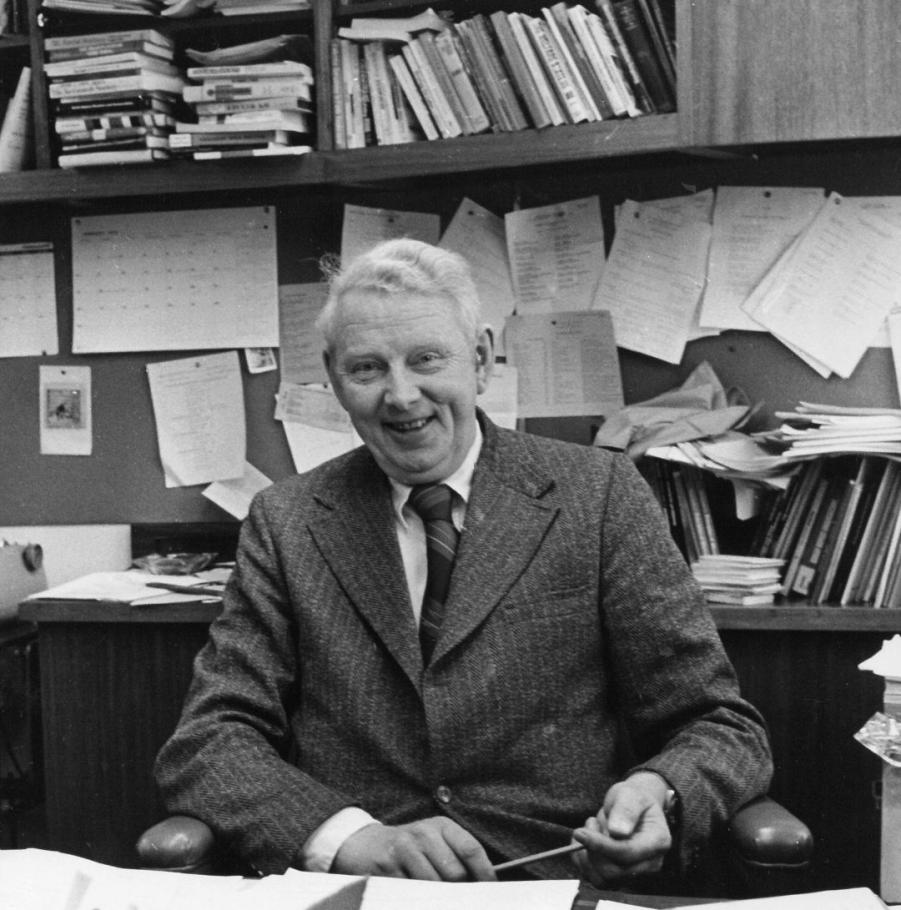
Heading
A Ph.D. Program is Launched
Heading
Expanding Coursework
In concert with the civil rights movement, SCSSW expanded its commitment to the issue of multicultural practice. Starting in the 1960s, coursework on socio-cultural, economic, and political environments was intensified. In addition, courses were added on group work, clinical social work and families and issues of sexual orientation.
Heading
School Graduates 45 Social Workers
From the Daily Hampshire Gazette caption: Assembled outside the Smith College Alumnae House prior to the 42nd commencement yesterday afternoon of the Smith College School for Social Work are, left to right, Mrs. Harold D. Hodgkinson of Boston, chairman of the standing committee of the college's board of trustees for the school; Dean Doris Silbert of the college, Miss Carolyn Hiltner of Morrisville, Pa., one of the graduates, and Howard J. Parad, director of the school. Mrs. Hodgkinson awarded the diplomas and Dean Silbert gave the commencement address. The school opened its annual summer session here in June. During the winter its undergraduates work in social agencies throughout the country.
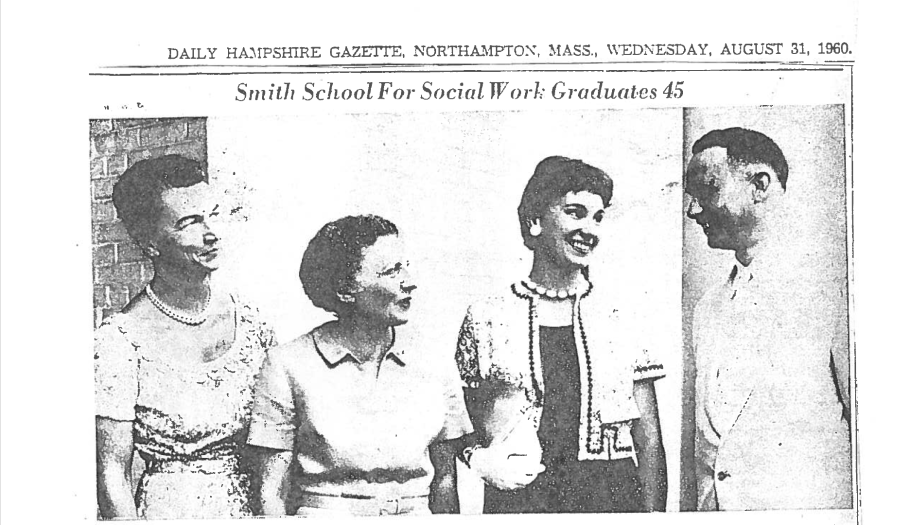
Heading
Howard Parad becomes Dean
Howard Parad served as dean of the School from 1956-71.
Howard Parad earned his A.B. from Harvard College and his M.S. in social services from Boston University. Parad served as a psychiatric social worker in the U.S. Army General and Convalescent Hospital at Camp Butner in North Caroline from 1945-46 and as a caseworker and district supervisor for the Family Service Association of Greater Boston from 1947-54. In 1948 he became assistant program director of the Hecht Neighborhood House in Dorchester where he remained until joining the faculty at Boston University School of Social Work in 1950 where he remained until 1956. From 1951-56 he also served as supervisor of the Guidance Camps Trust in Boston, 1951-56. He was a casework consultant and instructor in mental health for the Family Guidance Center at the School of Public Health at Harvard University from 1954-56. He published Crisis Intervention in 1966, with Libby G. Parad and Crisis Intervention: The Practitioner’s Sourcebook for Brief Therapy, Book 2 in 1990.
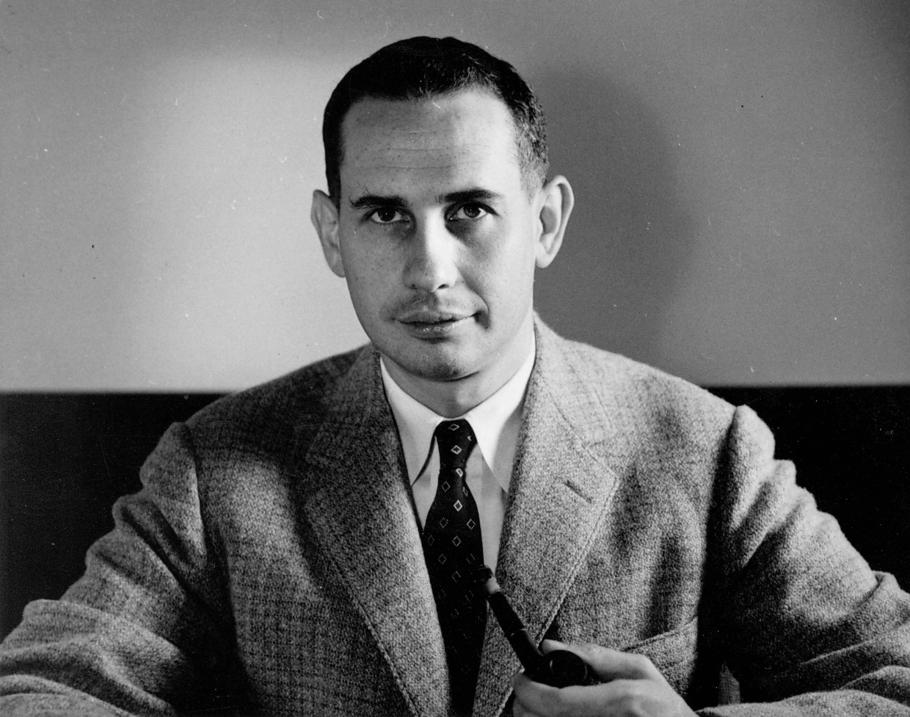
Heading
Curriculum Shortened Due to Ongoing War
In 1943, the demands of World War II led the School to adjust its curriculum from 24 months to just 15 months—though the 24-month curriculum was reinstated in 1946.
Heading
Florence Day becomes Director
Florence Day served as director of the School from 1943-56.
Florence Day earned her B.S. from the University of Wisconsin and her M.Sc (Soc. Admin.) from Western Reserve University. She was a professor in the School of Applied Social Sciences at Western Reserve University from 1927-43. She was professor and organizer of the School of Social Work at the University of Denver in 1931. Day served as field secretary of the Great Lakes Region of the Family Welfare Association of America from 1936-37. In 1935 she published “Study of Casework Practices." In 1949 she published “Problems of Collaboration Between the Clinic Center and the Psychology Department in Providing Clinical Experience.”
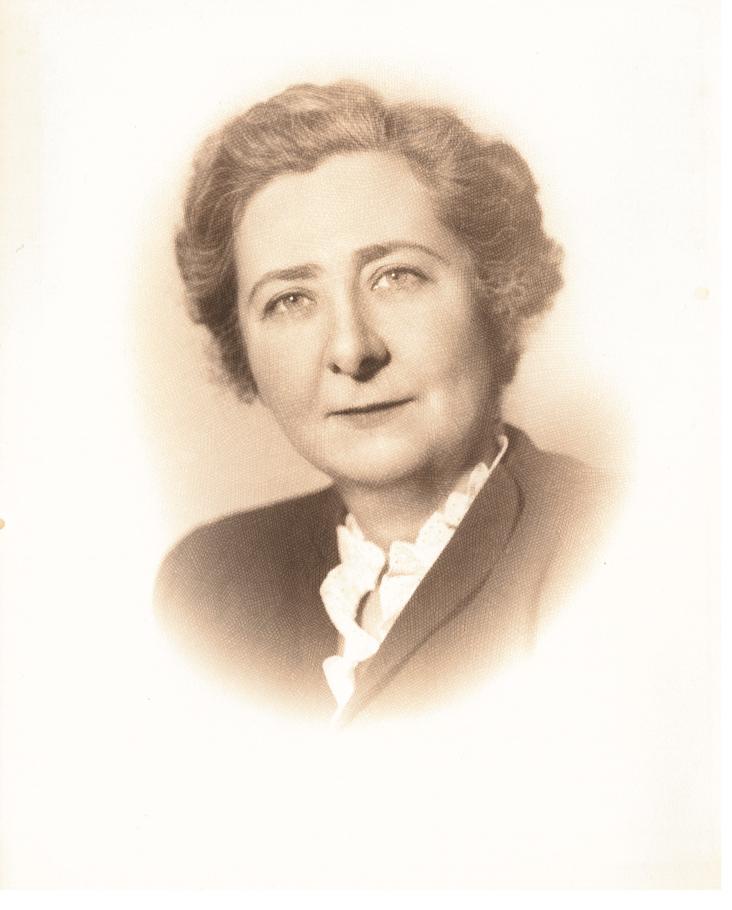
Heading
Culture as a Determinant of Behavior Course
In 1939, the School offered its first multicultural course, Culture as a Determinant of Behavior, taught by the noted social anthropologist Bronislaw Malinowski of the University of London.
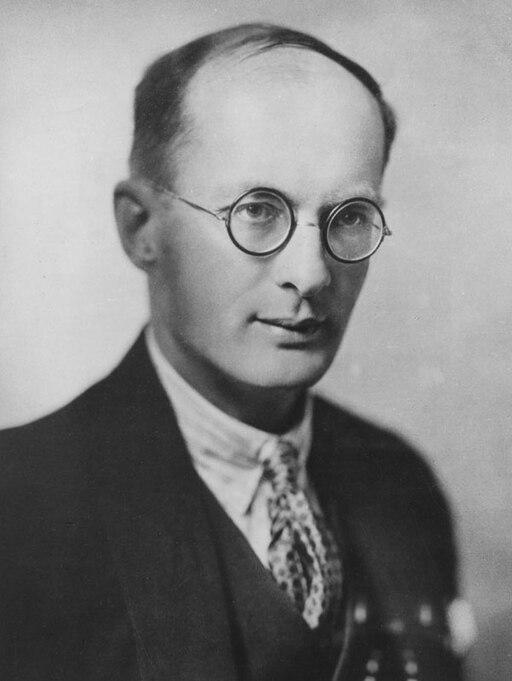
Heading
Annette Garrett becomes Associate Director
Annette Garrett served as associate director of the School from 1935-1957.
Annette Garrett earned her A.B. from the University of Kansas, her A.M. from the School of Social Service Administration at the University of Chicago, and her M.S.S. from Smith College. Garrett was a visiting teacher at Syracuse University from 1929-30 and served as chief of social service for the Judge Baker Guidance Center in Boston from 1930-35. Garrett published “Worker-Client Relationship” in 1949 and “Learning through Supervision” in 1954.
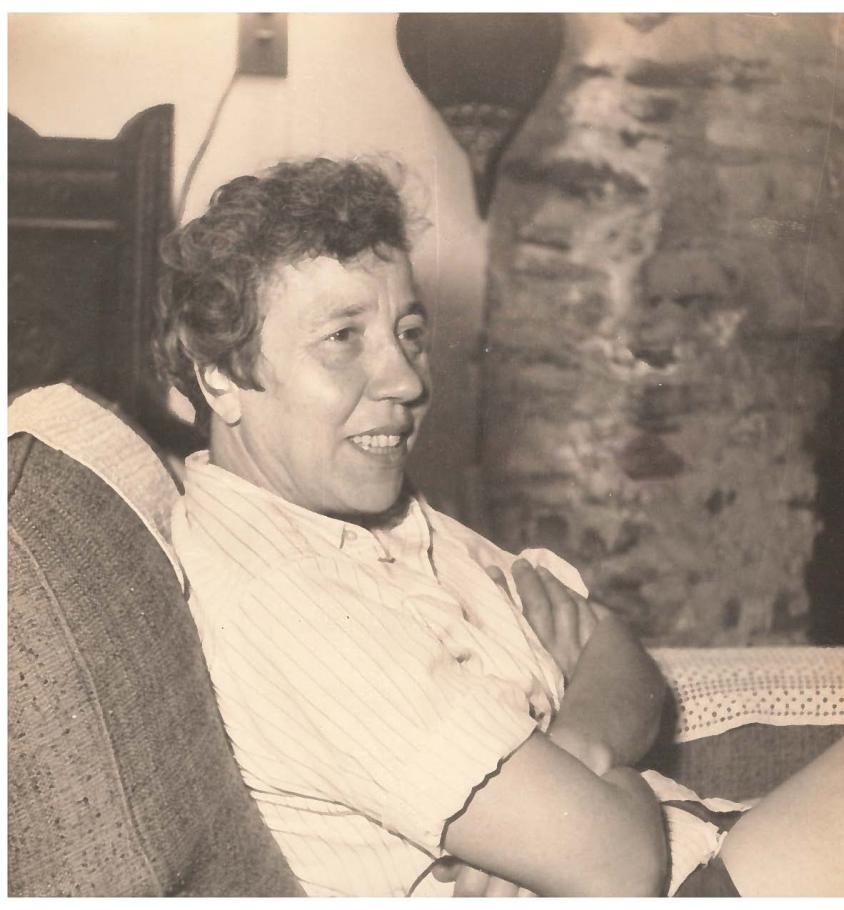
Heading
Smith College Studies in Social Work Launched
SSW first published the widely respected professional journal of clinical social work, Smith College Studies in Social Work.
Heading
First Conference for Supervisors
The School held its first Supervisor's Conference, demonstrating from its earliest years a commitment to maintaining close working relationships with those who supervise students in their internships. The conference continues today as the Deepening Clinical Practice Conference.
Heading
Bertha Capen Reynolds Urges Kimball to Admit Black Students
As Associate Director, Bertha Capen Reynolds wrote a formal letter to Everett Kimball, director, laying out her reasons for why she believed Black students should be accepted to the SSW. Black students were not formally banned from the School, but Kimball felt it would be too difficult to find a placement for them.
This was not an unrealistic fear, because placing their black students in internships and residencies was something all professional schools struggled with because of the refusal of most white hospitals and law firms to admit Black doctors, nurses, and lawyers. Indeed, the vast majority of black doctors and nurses graduated from a handful of Historically Black Colleges and Universities, most of which were connected to Black hospitals.
"The young folks are eager to get scientific and psychiatrically sound approaches to the world wide problems of race adjustment which are … among the most vital and pressing of problems for practical social work to solve."
Bertha Capen Reynolds, however, refused to accept the difficulties. She explained her refusal by pointing to the transformational period she taught at Atlanta University, a Historically Black College and University in Atlanta, GA. She was also likely inspired by her growing connection to Communism. The Communist Party in the USA was one of the few large political parties actively debating how to end racism and improve the lives of African Americans.
Reynolds drafted her letter very carefully in order to appear rational and practical to Kimball, rather than arguing out of emotion that he could easily dismiss. Kimball’s work at the Smith College did not shield him from pernicious stereotypes of the day about a women’s capacity for reason.
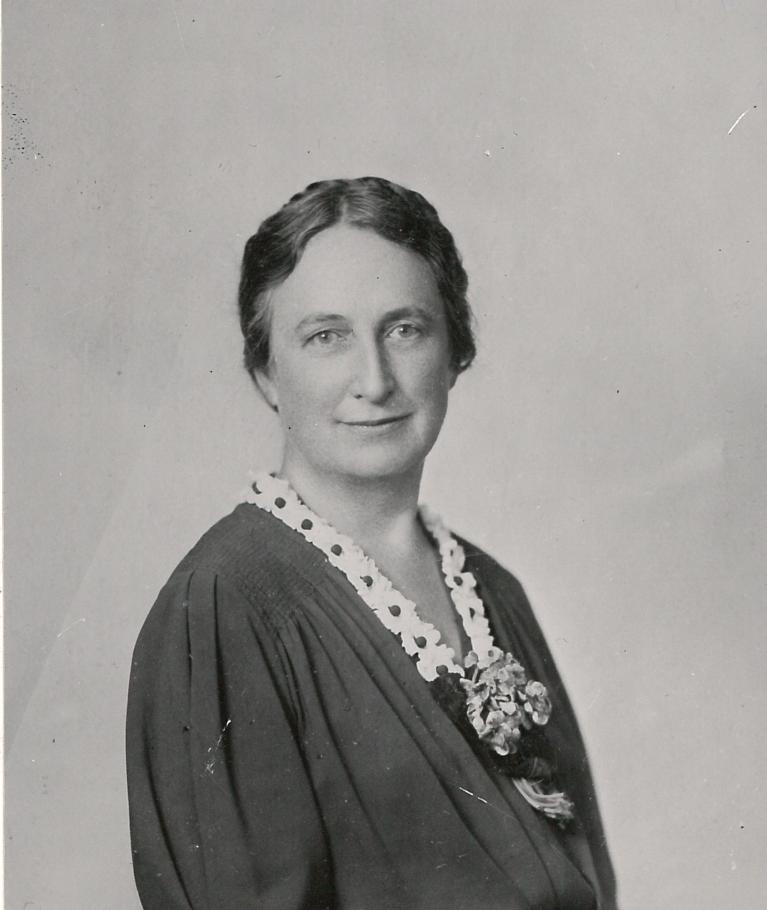
Heading
Professional Education Program Launches
The School begins offering a rich, active professional education program for clinicians around the country.
Heading
A 1925 Advertisement
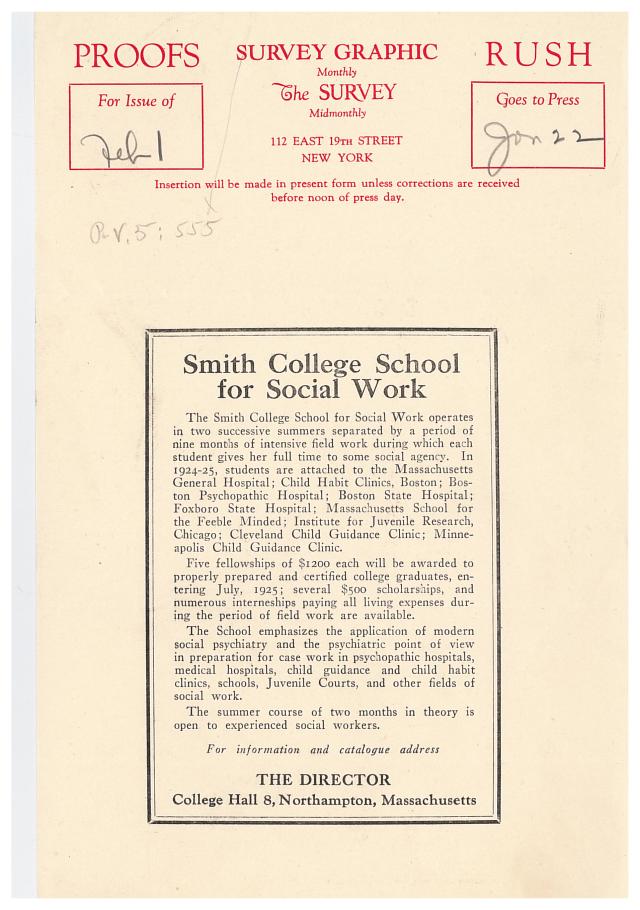
Heading
Bertha Capen Reynolds becomes Associate Director
Bertha Capen Reynolds served as associate director from 1925-1934 and associate director in charge of Advanced Courses from 1934-38.
Bertha Capen Reynolds earned her B.A. from Smith College in 1908; her B.S. from Simmons College in 1914; and worked as director of social services at Danvers State Hospital in Massachusetts from 1919-23. In 1934 she became a member of the advisory council and an important contributor to Social Work Today and she published Between Client and Community: A Study in Responsibility in Social Case Work. In 1942 she published Learning and Teaching in the Practice of Social Work. Capen Reynolds served as case supervisor for United Seamen’s Service to the Personal Service Department of the National Maritime Union from 1943-47 and taught at the William Alanson White Institute in New York from 1948-54.
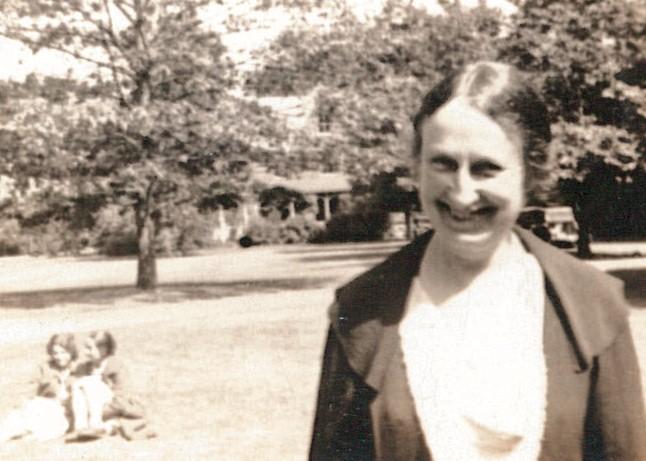
Heading
Everett Kimball becomes Director
Everett Kimball served as director of the School from 1923 to 1941.
Everett Kimball earned his A. B. from Amherst in 1896, his A. Y. in 1899, and his A.M. from Harvard in 1902, and his Ph.D. in 1904. Kimball served as associate professor in history at Harvard from 1902-03; instructor at Wellesley from 1903-04; Smith College History Department, associate professor from 1904-1914, and full professor 1914-1942. Kimball was also chair of the department of government at Smith College in 1919. Kimball authored The Public Life of Joseph Dudley, The National Government of the United States, State and Municipal Government in the United States.
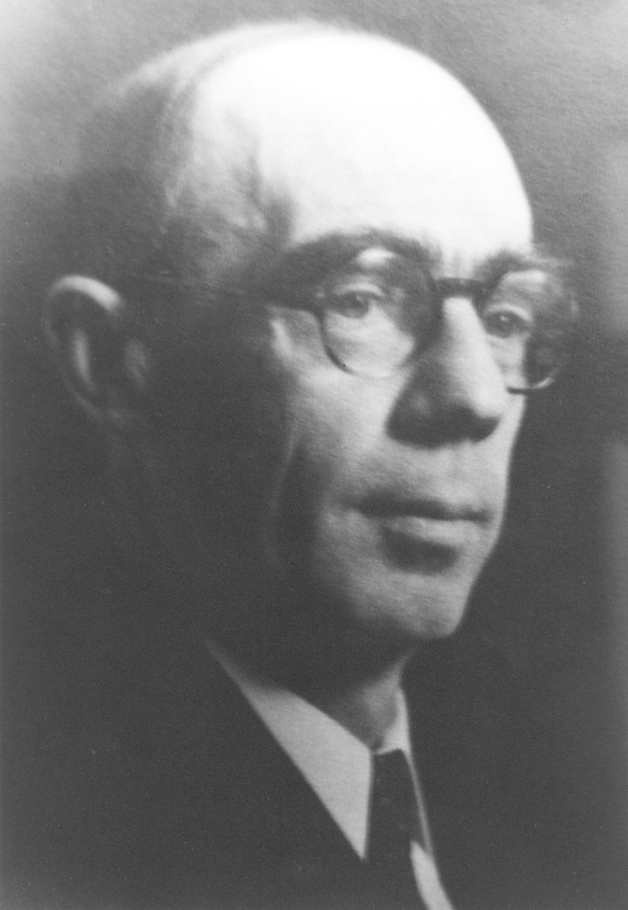
Heading
Accredited by CSWE
The School earned its first accreditation from the Council on Social Work Education in 1919.
Heading
Permanent School Established
F. Scott Chapin, who took over directorship from Mary Jarrett (who became assistant director) shared the happy news of the School's permanent creation with the Smith College Alumnae Quarterly readers.
Heading
F. Stuart Chapin becomes Director
F. Stuart Chapin served as director of the School from 1919-1923.
Chapin earned his B.A. from Columbia University in 1909 and his Ph.D. from Columbia in 1911. Chapin went on to publish Education and the Mores in 1911. He served as sociology professor and department chair at Smith College from 1912-1921 and published An Introduction to the Study of Social Evolution in 1913. In 1919 he became director of the new permanent Smith College School for Social Work, after Mary Jarrett directed the first wartime session in 1918. In 1920 he published Field Work and Social Research and was elected a fellow of the American Statistical Association. He went on to serve as sociology professor and department chair at the University of Minnesota from 1922-1953 and he helped found the Social Science Research Council.
See this list for more of his publications.
Photo: F. Stuart Chapin, Photographer Unrecorded, School for Social Work Records, Digital Image #3972, College Archives, Smith College, Northampton, MA

Heading
First Practicum Internships
Martha May, B.A. 1916, describes her internship at Fort Sheridan, IL. She became one of the fourteen graduates to go into military hospitals as "reconstruction aides."
Heading
Evaluation of the First Summer Session
After warning nothing might come of the plans for the summer, the very next issue of the Smith Alumnae Quarterly carries an evaluation of the summer session by Maida H. Solomon, 1912, B. S. Simmons 1914, a psychiatric social worker at the Boston Psychopathic Hospital.
Heading
Diary of Bertha Capen Reynolds
Bertha Capen Reynolds, or BCR as she refers to herself, later becomes the most distinguished student from that first summer. A graduate of Smith College in 1908, she had suffered a physical and emotional illness before deciding to enroll in the summer experiment at her alma mater. She records her activities and thoughts in a diary while a student. She later becomes an influential administrator of the college, developing the first curriculum for what would become the Program for Advanced Studies and then Ph.D. program.
- Photo: A mock clinic with Mary Jarrett, Smith College School for Social Work, n.d. Photograph by H. Edelstein, College Archives, Digital Image #3612, Smith College, Northampton, MA
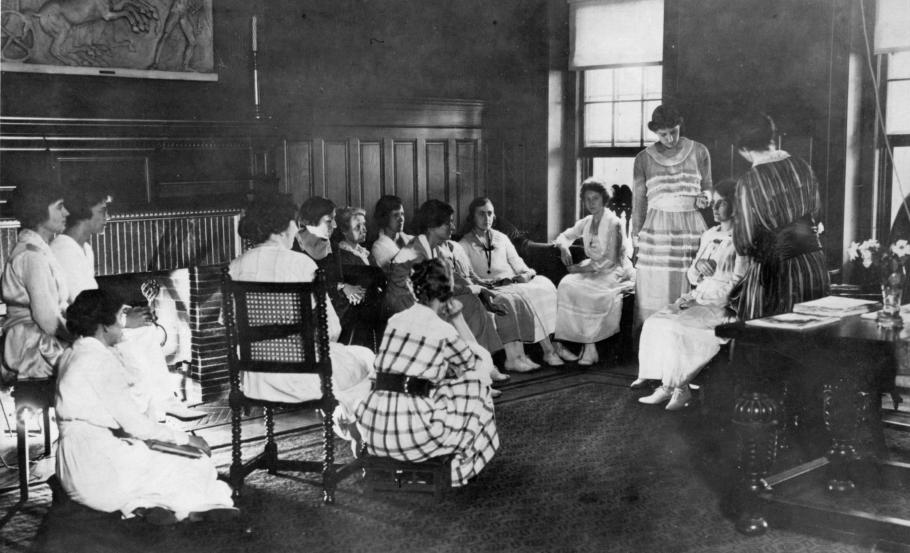
Heading
Mary Jarrett Becomes the First Director
One hundred and thirty six students apply, 81 are accepted, and 67 register. They travel from 21 different states, represent 20 different colleges, and range in age from 19 to 46. Forty-three are college graduates; three have graduate degrees, including one a Ph.D. in psychology. Ten came to the course without a degree, but with practical experience that made them eligible for the course. Many had been previously employed--12 as teachers, 16 as social workers, three as librarians, and three as secretaries.
Mary Jarrett, first director of the SSW, writes later that this photo is her most favorite photo of herself. She is in the center with glasses.
- Photo: 1918 Faculty, Photographer Unrecorded, School for Social Work Records, RG 60, Box 1315, Smith College Archives, Northampton, MA.
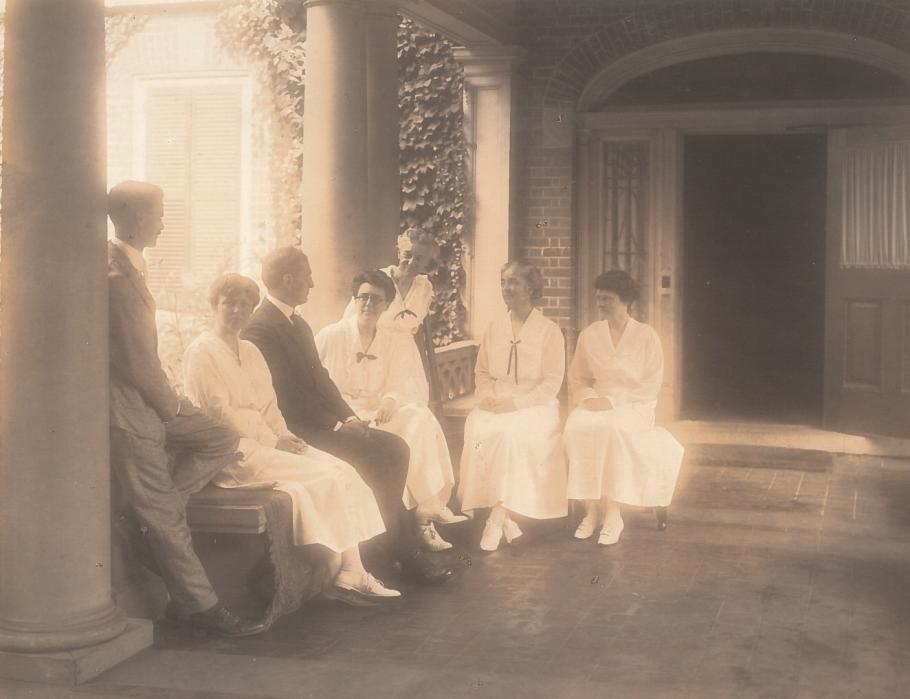
Heading
Welcoming Applicants for Training in Psychiatry
In 1918 Smith College, along with five other women's colleges, began offering war emergency summer courses. In an article about their creation, Edith K. Dunton wrote "So the Smith training school, though primarily a war emergency school, is really something more than just that. While the war lasts end for some months or even years after It the workers who hold the certificate of the school may normally expect to be employed among shell-shocked soldiers; after that In many walks of civilian life where the social worker with a knowledge of psychology and psychiatry may be valuable, even Invaluable. "
